Biology - Nutrition in Plants
1/18
There's no tags or description
Looks like no tags are added yet.
Name | Mastery | Learn | Test | Matching | Spaced |
|---|
No study sessions yet.
19 Terms
- photosynthesis
the process in which green plants convert carbon dioxide and water into glucose by using sunlight energy absorbed by chlorophyll in chloroplasts
- What is the equation for photosynthesis?
$6H2O +6CO2$ → C₆H₁₂O₆ + $6O_2$
- What are the two stages of photosynthesis? Describe them (2/2)
Light stage in which light energy is absorbed by chlorophyll is used to split water molecules into hydrogen and oxygen — releasing oxygen as a waste product; Dark stage in which hydrogen atoms produced in the light stage reduce the carbon dioxide molecules forming glucose via enzymes
- What are the conditions necessary for photosynthesis? (6)
carbon dioxide, water, sunlight energy, chlorophyll, chloroplast enzymes, temperature between 5 and 40 degrees Celsius to facilitate enzymatic functions
- What are the four main factors affecting the photosynthesis rate, and how? (4/4)
Light limits the rate between dusk and dawn, and during the winter months in temperate climates; Temperature limits the rate during the winter months in temperate climates; Water limits the rate during the dry season in tropical climates and when the ground is frozen in temperate climates; Carbon dioxide limits the rate during the day in most climates as its concentration is low
- What does glucose do in the plant? (4)
Used by leaf cells in respiration; Condensed into starch for later use; Converted into other organic substances by leaf cells; Can be converted into sucrose
- What does sucrose do in the plant? (5)
Reconverted into glucose for respiration; Converted into cellulose for cell production; Converted into starch; Converted into amino acids/protein by the addition of nitrogen and sulfur ions from the soil; Converted into lipids and stored in the seeds
- What external adaptations have the leaf made to optimize photosynthesis? (4)
Laminae is usually broad and held out flat by the veins to increase surface area to increase absorption of sunlight energy and carbon dioxide; Laminae are usually thin — maximizing the distribution of sunlight energy and carbon dioxide among the cells; Lamina lies 90 degrees to the sunlight — maximizing its exposure; Laminae are spaced out around stems — maximizing each one’s exposure to the sunlight
What internal adaptations have the leaf made to optimize photosynthesis? (7)
Waxy cuticles on the outside of both the upper and lower epidermis prevent the excessive loss of water;
Stomatal pores in the lower epidermis allow carbon dioxide to diffuse into the leaf and oxygen to diffuse out;
Palisade mesophyll cells contain large number of chloroplasts to maximize the amount of light absorbed;
Palisade mesophyll cells are arranged at 90 degrees to the leaf’s surface — minimizing loss of sunlight energy by increasing concentration of chloroplasts at the top of the cells;
Spongy mesophyll cells are shaped to facilitate intercellular spaces in which carbon dioxide can diffuse to all the mesophyll cells and oxygen can diffuse out the stomatal pores;
Xylem vessels in the veins running through the leaf supply all the mesophyll cells with water and mineral ions;
Phloem sieve tubes in the veins transport the soluble food made in photosynthesis away from the mesophyll cells to other parts of the plant
- What does nitrogen do in plants, what is its source, what is the result of its deficiency? (2/1/3)
To make proteins used for plant growth, to form chlorophyll; Nitrate ions; Poor growth; Chlorosis; Underdeveloped leaves
- What does magnesium do in plants, what is its source, what is the result of its deficiency? (1/1/1)
To form chlorophyll; Magnesium ions; Chlorosis
- What does phosphorus do in plants, what is its source, what is the result of its deficiency? (2/1/3)
To make ATP, to make some proteins; Phosphate ions; Stunted growth, dull, purple-green leaves with curly brown edges, poor root growth
- What does potassium do in plants, what is its source, what is the result of its deficiency? (2/1/2)
To help maintain the correct salt balance in cells, to help in photosynthesis; Potassium ions; Leaves have yellow-brown margins and brown spots that give a mottled appearance; Premature death of leaves
What does sulfur do in plants, what is its source, what is the result of its deficiency? (1/1/2)
Make proteins; Sulfate ions; Poor growth, chlorosis of leaves
What does calcium do in plants, what is its source, what is the result of its deficiency? (1/1/3)
Make cell walls in the tips of growing roots and shoots; Calcium ions; Poor, stunted growth, death of the growing tips of roots and shoots, Poor bud development
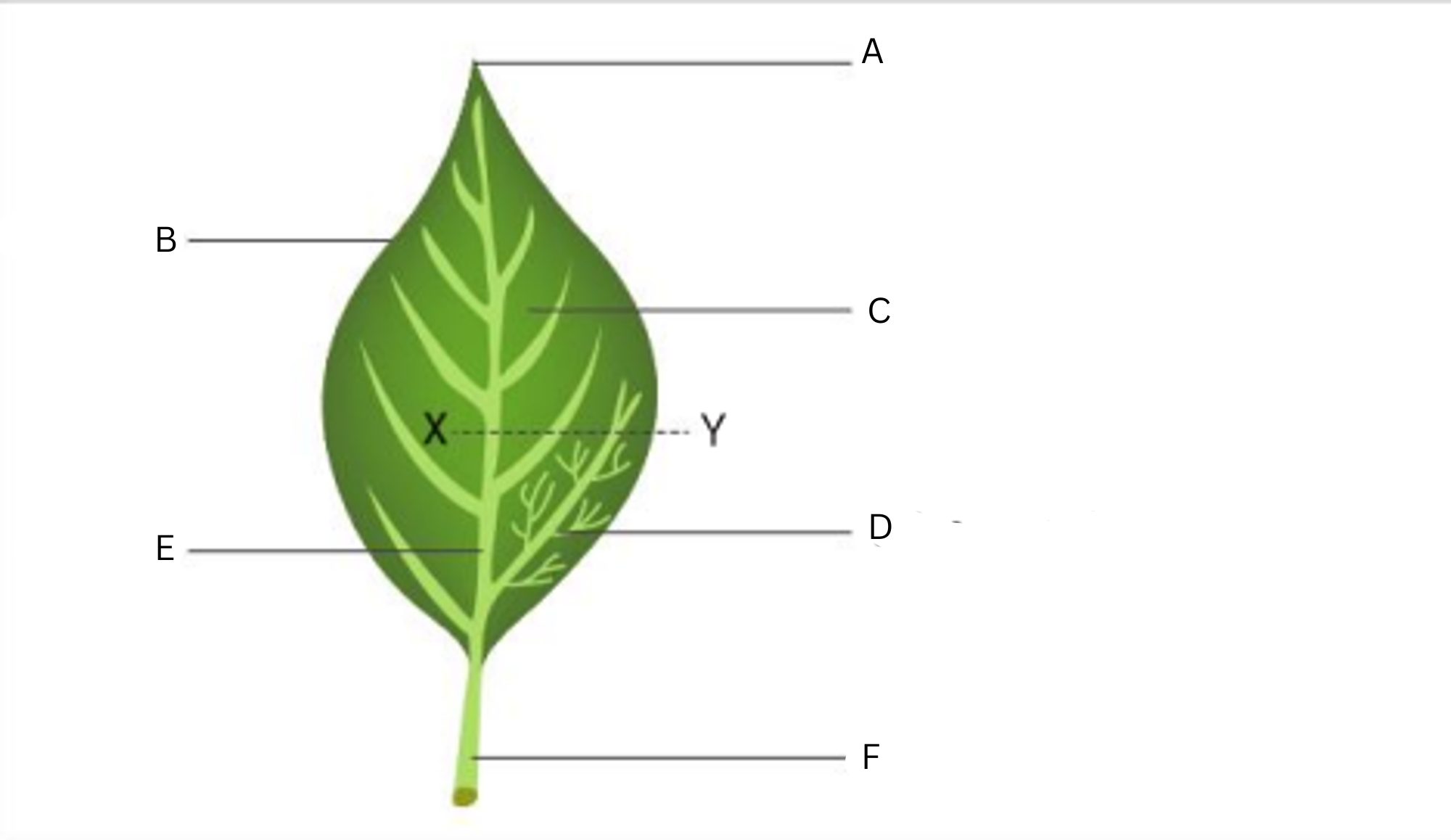
Label this diagram (6)
A - apex, B - margin, C - lamina, D - vein, E - midrib, F - petiole
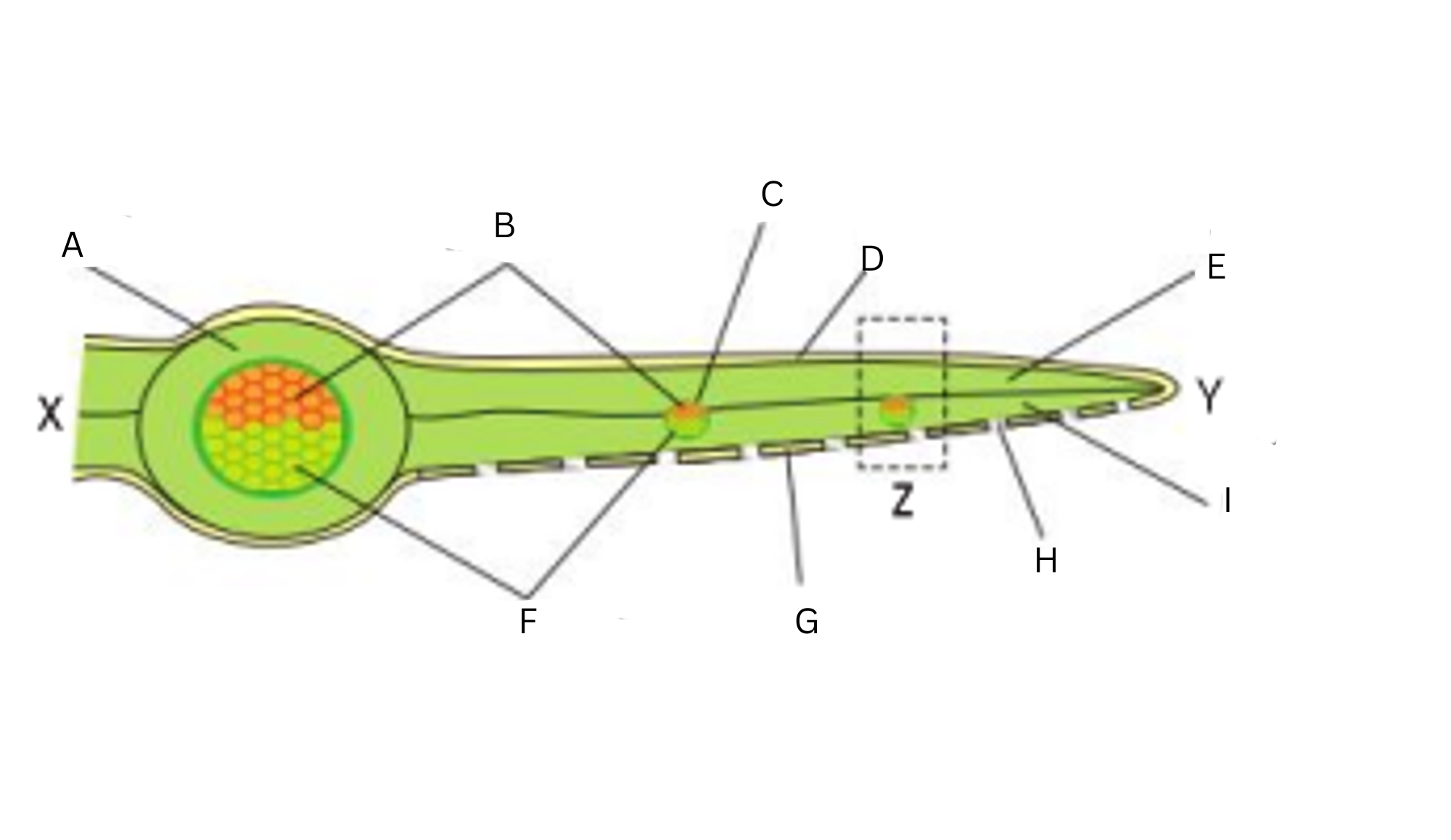
Label this diagram (9)
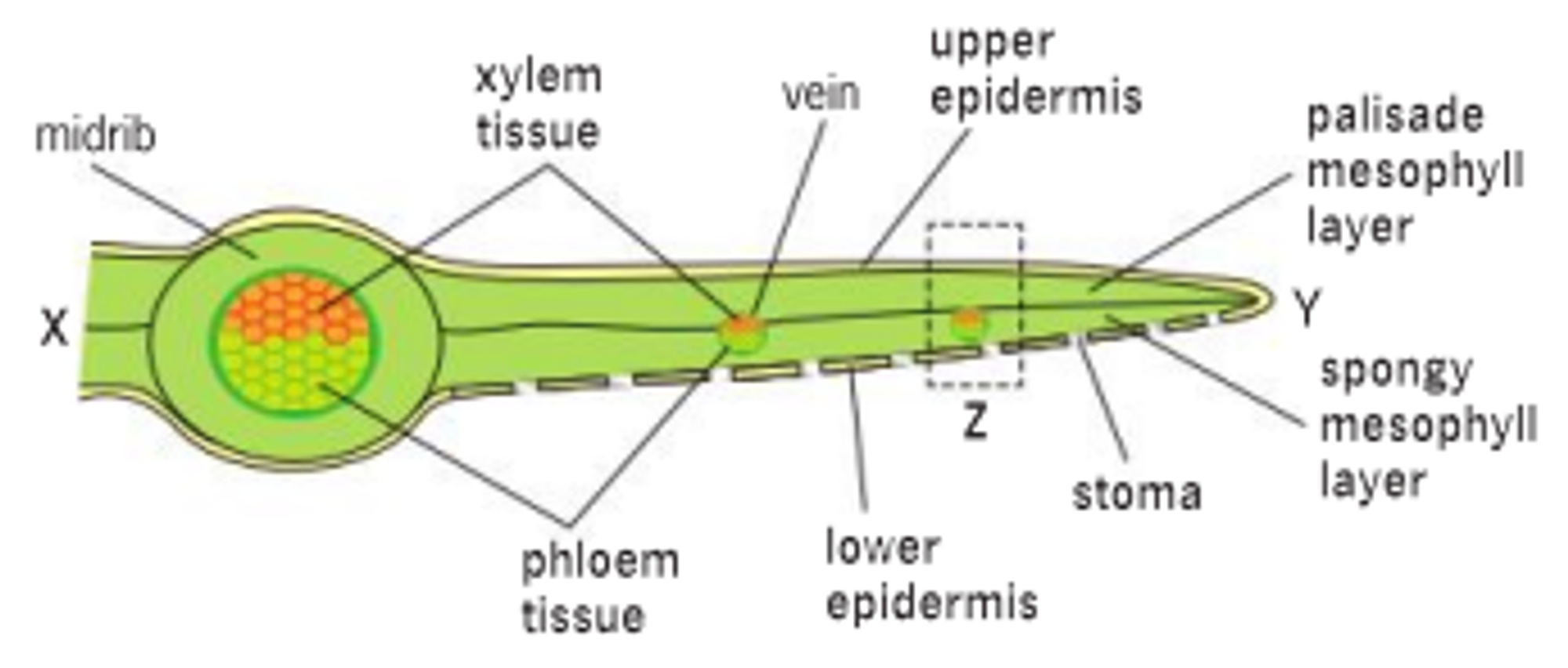
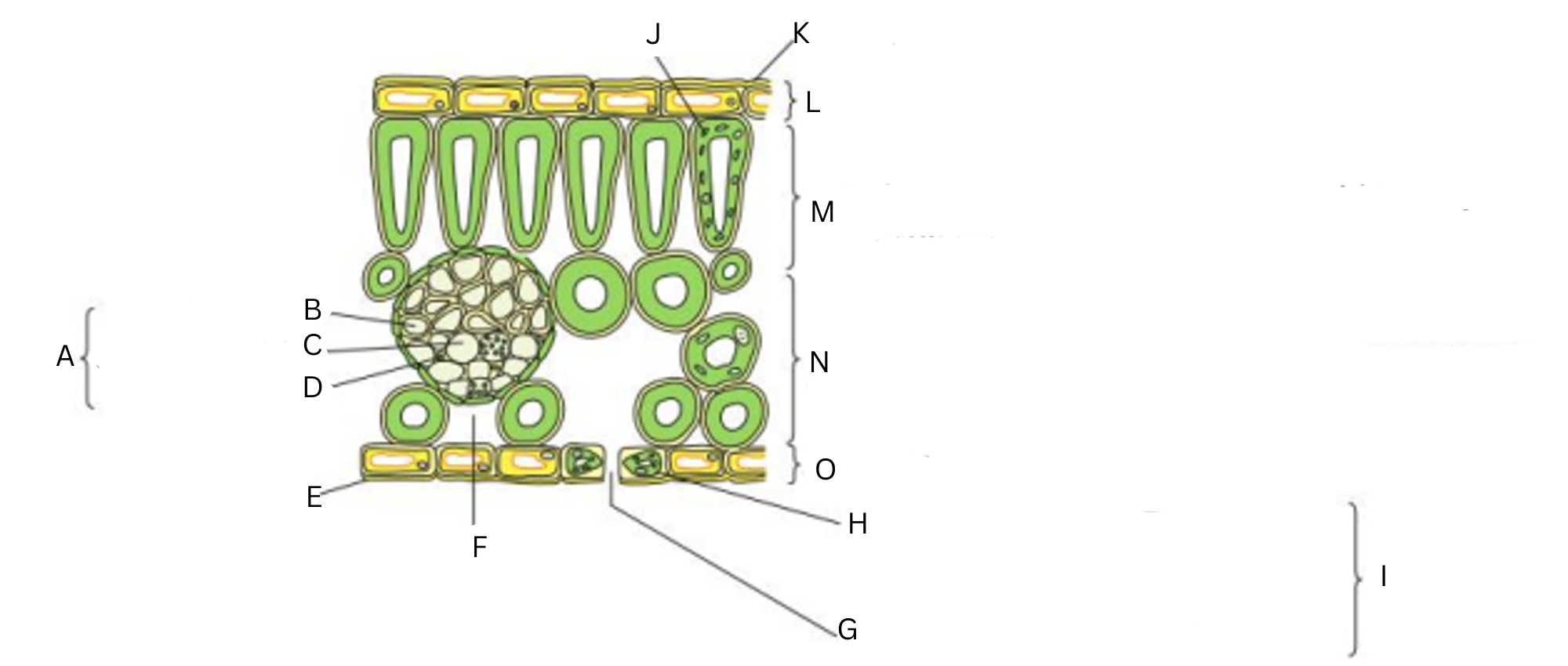
Label this diagram (15)
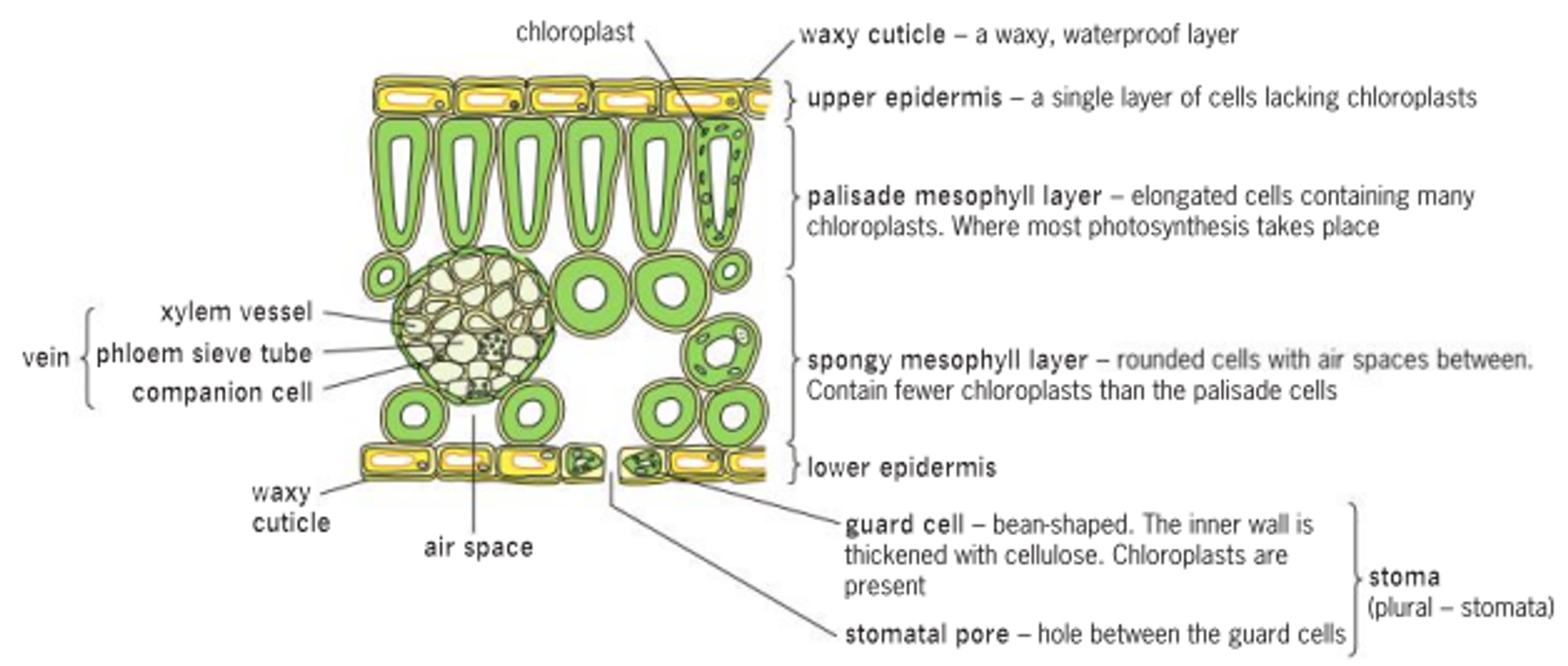
guard cells
pair of epidermal cells which regulate the diffusion of gases in and out of the plant by opening and closing the stomatal pores